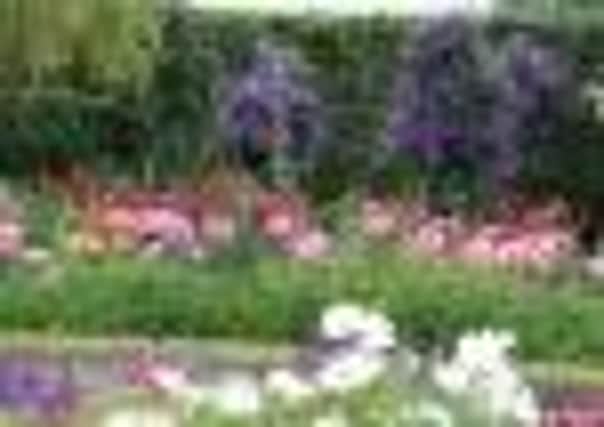Castle gardens ina different light


Whether you visit during the day and capture the stunning colour and vibrancy of our sub-tropical borders and labyrinth centre piece or arrive for a magnificent and dramatic evening of entertainment you will find the gardens full of colour.
The Dahlias are looking beautiful at the moment, they’re in full bloom throughout the gardens, some of the varieties are ‘David Howard’ - dark leaves, double apricot-orange flowers, ‘Bishop of Llandaff’ - coppery purple leaves, single dark red flowers, ‘Bishop of Auckland’ - vermillion semi-double flowers, blackish leaves and the wonderful ‘Café au Lait’ - large sumptuous soft white flower heads with mocha overtones found in the Fitzalan Chapel garden and the English Herbaceous Borders within the walled garden.
Advertisement
Hide AdAdvertisement
Hide AdSome of the new ‘Babylon’ collection of Dahlias are ‘Babylon Bronze’ - orange with apricot and rust highlights, ‘Babylon Paars’ large vibrant purple-red double flowers, ‘Babylon Red’ large red flowers, all the Babylon collection have very large flower heads, nearly the size of dinner plates. These are used as cut flowers within the castle.
The Dahlia is the national flower of Mexico and was originally cultivated by the ancient Aztecs.
They grow in the mountain regions of Mexico and Guatemala and have been used for countless generations.
The Tree Dahlia (Dahlia. Imperialis), which we have here at Arundel Castle, are open centered with single blooms, hollow stems which can grown up to 20 feet or more, the stems were used for storing and hauling water for Aztec hunters - they called them “Acocotli” meaning water cane. Dahlia takes its name from the Swedish botanist Dr Anders Dahl. In the 16th century the ‘Spanish conquistadors’, apart from conquering the Aztecs, also brought with them botanists, whose job it was to bring back plants from the “New Word” for Spain.
Advertisement
Hide AdAdvertisement
Hide AdOther striking plants to look out for are the ‘Giant Canna Lilies’ (Iridiflora) - with their stunning flower heads and large foliage, also the beautiful ‘Dierama pulcherrimum’ known as the ‘wand flower’ or ‘Angel’s Fishing Rod’ which are flowering around the kitchen garden fountain.
In the Tropical glasshouse you will find Izzy turning up the heat with our colourful display of Red Hot Chilli Peppers.
The heat of a chilli is measured in Scoville Units, this varies from zero, in the case of sweet peppers, to one million for the Dorset Naga Chilli! Arundel Castle’s hottest chillies are the Scotch Bonnet, Orange Habanero and Thai Hot Dragon. Just remember though, these are just for looking at and must not be touched, especially as we will not be responsible for watery eyes and itchy skin!
Chillies were first introduced to Europe from South America in 1493, by Christopher Columbus. Plants were soon dispersed around the world because of their medicinal properties and use as food flavouring.
Advertisement
Hide AdAdvertisement
Hide AdThere are over 1,700known varieties of chillies, which come in all shapes and sizes and when ripe have six times more vitamin C than an orange! Although our collection is small there are certainly many shapes, colours and sizes to look at.
A few tips from the castle garden team:
Harvest your homegrown fruits, vegetables and herbs.
Finish summer pruning apples and pears.
Trim Lavender lightly, after the flowers have faded.
Protect Dahlia’s from earwigs
Cut back any collapsed or spread perennials.
Happy Gardening!
Arundel Castle & Gardens open from Saturday 31 March to Sunday 4 November 2012, Tuesdays to Sundays inclusive, Bank Holiday Mondays and August Mondays. See website www.arundelcastle.org for garden tours, events and Arundel Festival information.
Martin Duncan - Head Gardener Arundel Castle